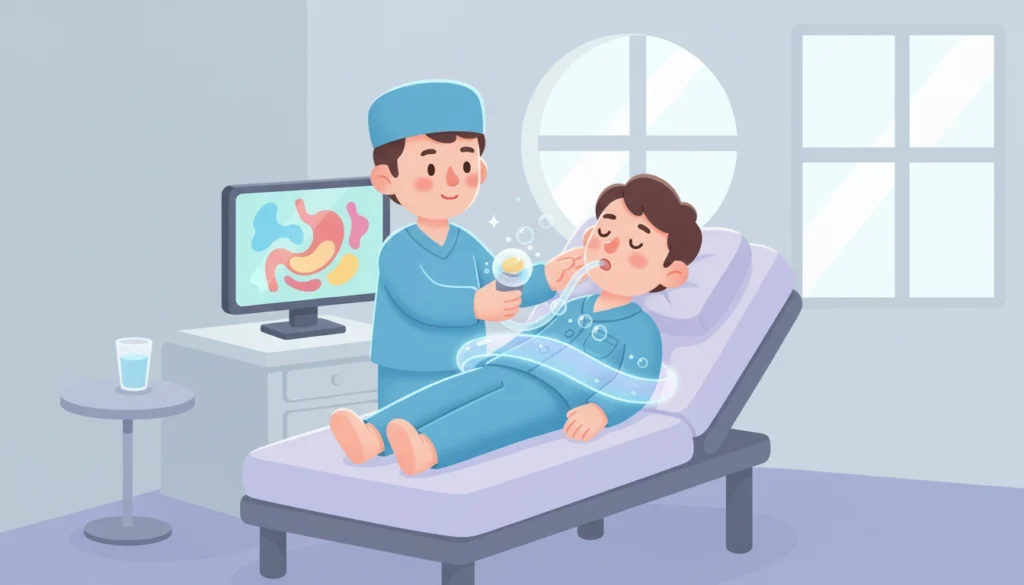A Patient’s Story
Sophie had been experiencing persistent heartburn and difficulty swallowing. When her GP recommended a gastroscopy, she worried about discomfort during the procedure. At LSDC, she learned that sedation options vary and that her medical history and anxiety levels would influence the choice.
Understanding sedation helped Sophie feel more confident and relaxed before her procedure.
Understanding Gastroscopy and Sedation
A gastroscopy is an examination of the oesophagus, stomach, and duodenum using a flexible camera. While it is generally safe and well-tolerated, some patients feel anxious about discomfort, gagging, or pain. Sedation can make the experience more comfortable and reduce anxiety, but it is not always necessary for every patient.
Sedation Options
No Sedation: Many patients tolerate gastroscopy without sedation, especially with local throat sprays or topical anaesthetic. This allows for quick recovery and avoids risks associated with sedatives.
Conscious Sedation: Sedatives are administered intravenously to help patients relax while remaining responsive. Conscious sedation improves comfort and reduces anxiety.
Deep Sedation or General Anaesthesia: Usually reserved for patients with high anxiety, previous intolerance, or special medical conditions. This option requires careful monitoring and may have a longer recovery time.
Benefits of Sedation
Reduces discomfort and gagging during the procedure.
Alleviates anxiety, especially in first-time patients.
Allows for smoother and faster examination, helping the endoscopist obtain clearer results.
Improves tolerance for biopsies or minor interventions performed during gastroscopy.
Risks and Considerations
Sedation is generally safe, but it carries some risks, particularly in patients with:
Cardiopulmonary conditions (heart or lung disease)
Severe obesity or sleep apnea
Allergies to sedative medications
Advanced age or frailty
Possible side effects include temporary drowsiness, low blood pressure, or slowed breathing, which is why monitoring by trained staff is essential. At LSDC, our team ensures that each patient’s medical history is reviewed to select the safest sedation approach.
Special Cases Requiring Consideration
Some patients may benefit from adjusted sedation strategies:
Anxious or first-time patients: Often offered conscious sedation to improve comfort.
Patients with prior complications: Sedation may be tailored or avoided, depending on risks.
High-risk medical conditions: Consultation with anaesthesia or specialised monitoring may be required.
Children or very elderly patients: Sedation doses and monitoring are adjusted for safety.
Preparing for Sedation
If sedation is planned:
Fasting is typically required for 6–8 hours to reduce the risk of aspiration.
Medication review: Certain medications may need temporary adjustment.
Arrange transport: Patients cannot drive home after sedation.
At LSDC, we provide detailed instructions to ensure safe and smooth sedation, personalised to each patient’s health profile.

